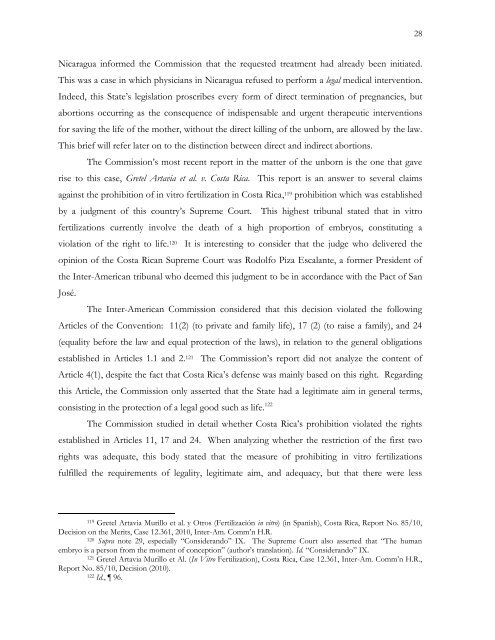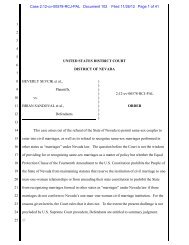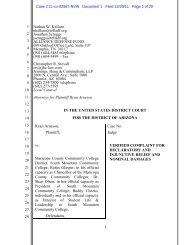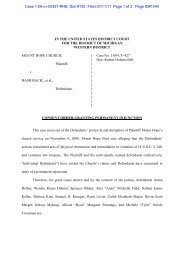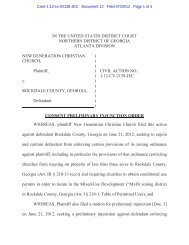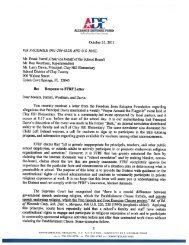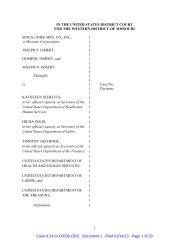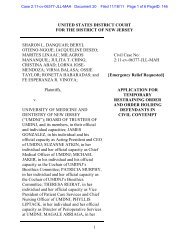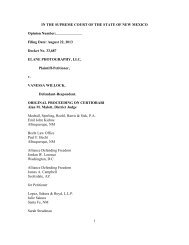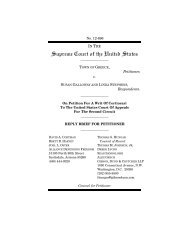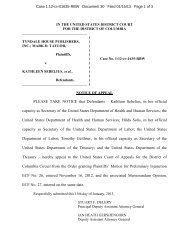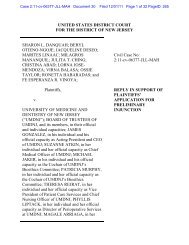English - Alliance Defending Freedom Media
English - Alliance Defending Freedom Media
English - Alliance Defending Freedom Media
Create successful ePaper yourself
Turn your PDF publications into a flip-book with our unique Google optimized e-Paper software.
28<br />
Nicaragua informed the Commission that the requested treatment had already been initiated.<br />
This was a case in which physicians in Nicaragua refused to perform a legal medical intervention.<br />
Indeed, this State’s legislation proscribes every form of direct termination of pregnancies, but<br />
abortions occurring as the consequence of indispensable and urgent therapeutic interventions<br />
for saving the life of the mother, without the direct killing of the unborn, are allowed by the law.<br />
This brief will refer later on to the distinction between direct and indirect abortions.<br />
The Commission’s most recent report in the matter of the unborn is the one that gave<br />
rise to this case, Gretel Artavia et al. v. Costa Rica. This report is an answer to several claims<br />
against the prohibition of in vitro fertilization in Costa Rica, 119 prohibition which was established<br />
by a judgment of this country’s Supreme Court. This highest tribunal stated that in vitro<br />
fertilizations currently involve the death of a high proportion of embryos, constituting a<br />
violation of the right to life. 120 It is interesting to consider that the judge who delivered the<br />
opinion of the Costa Rican Supreme Court was Rodolfo Piza Escalante, a former President of<br />
the Inter-American tribunal who deemed this judgment to be in accordance with the Pact of San<br />
José.<br />
The Inter-American Commission considered that this decision violated the following<br />
Articles of the Convention: 11(2) (to private and family life), 17 (2) (to raise a family), and 24<br />
(equality before the law and equal protection of the laws), in relation to the general obligations<br />
established in Articles 1.1 and 2. 121 The Commission’s report did not analyze the content of<br />
Article 4(1), despite the fact that Costa Rica’s defense was mainly based on this right. Regarding<br />
this Article, the Commission only asserted that the State had a legitimate aim in general terms,<br />
consisting in the protection of a legal good such as life. 122<br />
The Commission studied in detail whether Costa Rica’s prohibition violated the rights<br />
established in Articles 11, 17 and 24. When analyzing whether the restriction of the first two<br />
rights was adequate, this body stated that the measure of prohibiting in vitro fertilizations<br />
fulfilled the requirements of legality, legitimate aim, and adequacy, but that there were less<br />
119 Gretel Artavia Murillo et al. y Otros (Fertilización in vitro) (in Spanish), Costa Rica, Report No. 85/10,<br />
Decision on the Merits, Case 12.361, 2010, Inter-Am. Comm’n H.R.<br />
120 Supra note 29, especially “Considerando” IX. The Supreme Court also asserted that “The human<br />
embryo is a person from the moment of conception” (author’s translation). Id. “Considerando” IX.<br />
121 Gretel Artavia Murillo et Al. (In Vitro Fertilization), Costa Rica, Case 12.361, Inter-Am. Comm’n H.R.,<br />
Report No. 85/10, Decision (2010).<br />
122 Id., 96.


